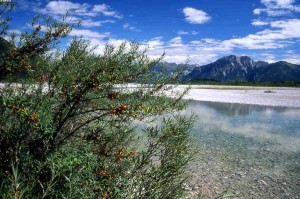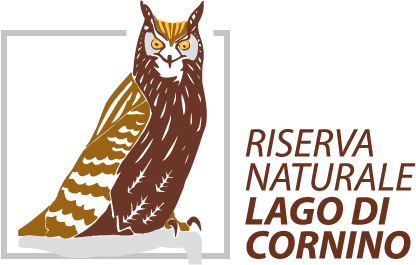Flora and Fauna
Fauna

The unusual geographical geological and topographical features of the landscape determine the presence of a rich and diverse fauna, with rare species that in many cases are at the edge of their range. The permeability and the subsequent dryness of the substrate provide favourable conditions for many reptiles including the horn-nosed viper Vipera ammodytes, the slow-worm Anguis fragilis, the European whipsnake Hierophis viridiflavus and the Aesculapian snake Zamenis longissimus, while allowing the presence of limited populations of amphibians (the fire salamander Salamandra salamandra, common toad Bufo bufo and the green toad B. viridis). The area is particularly interesting for its bird life and the presence of a wide variety of invertebrates.
On the banks of the Tagliamento and the surrounding areas it is easy to see birds that are typical of the plain or wetland areas such as herons, ducks, gulls and waders but also hear the song of species that are now rare in the Region such as the woodlark Lullula arborea and the ortolan bunting Emberizia hortulana. The areas surrounding the lake seem to be woodland but within them are set small hay-meadows and the birdlife is dominated by the blackbird Turdus merula, blackcap Sylvia atricapilla, great tit Parus major, blue tit Cyanistes caeruleus, chaffinch Fringilla coelebs, nightingale Luscinia megarhynchos, jay Garrulus glandarius, great spotted Picoides major [F3] and green woodpecker Picus viridis, rock bunting E. cia and Western Bonelli’s warbler Phylloscopus bonelli.
The limestone cliffs form the backdrop to the flight of a large flock of ravens Corvus corax and hooded crows C. corone cornix as well as providing suitable shelter and nesting sites for the eagle owl Bubo bubo. The presence of the river and the pre-Alpine hills mean that the area is located on a major migration route, and this leads to the appearance of many migratory species during the spring and autumn. At these times of year, in addition to the short-toed eagle Circaetus gallicus, the honey buzzard Pernis apivorus and the goshawk Accipiter gentilis, the visitor can also see marsh Circus aeruginosus, hen C. cyanus and Montagu’ harrier C. pygargus as well as osprey Pandion haliaetus, red-footed falcon Falco vespertinus and merlin F. colombarius. One mustn’t forget the presence of the feeding point for the griffon vultures that attracts nationally rare species such as the red kite Milvus milvus, Egyptian vulture Neophron percnopterus and the cinereous (or black) vulture Aegypius monachus while the black kite Milvus migrans (in summer), common buzzard Buteo buteo, Eurasian kestrel F. tinnunculus, golden eagle Aquila chrysaetos and sparrowhawk A. nisus are common and at night one can encounter the tawny owl Strix aluco and the little owl Athene noctua.
A species of great interest among the mammals present is the Alpine shrew Sorex alpinus, here reaching one of its lowest altitudinal limits at a European level [F4] . The hedgehog Erinaceus europaeus (the main prey of the eagle owl), the edible dormouse Glis glis, hazel dormouse Muscardinus avellanarius and the red squirrel Sciurus vulgaris are very common as are foxes Vulpes vulpes, badgers Meles meles and beech martens Martes foina, which are, however difficult to observe as they are elusive species, with sometimes crepuscular or nocturnal behaviour. Among the ungulates the most widespread species is the roe deer Capreolus capreolus.
The Griffons

The griffon vulture Gyps fulvus is a large vulture, with a wingspan of nearly three metres (10 feet) and a weight of 7-12 kg (15 – 26 lbs). All the vultures have broad, fingered wings to exploit thermal updrafts to perform movements that may reach hundreds of kilometres a day. These characteristics are the result of the evolution of a group of birds that has achieved a high level of specialization, which involves necrophagy (eating dead animals). In Europe there are four species of vultures (the griffon , cinereous (or black) vulture, Egyptian vulture and the bearded vulture) that, until the last century, were well represented in Italy.
The fundamental ecological requirements for the griffon are the presence of large open areas across which to search for food, traditional forms of farming which allow a certain trophic (feeding) potential and the availability of cliffs in rugged mountain areas for nesting, in situations favourable to the formation of updrafts for soaring.
The Griffon is a gregarious species that lives in colonies that are often large, with a pronounced social behaviour. It gathers in groups at perches, on carcasses and at nesting sites. To find food it uses a particular system, based on the collaboration between different individuals. Each individual griffon explores areas of land, usually flying at a considerable height, keeping in visual contact with other birds operating in the same way. The exploration takes place in soaring flight and, passing from one thermal (updrafts formed by heating of the air) to another, the griffons are able to control vast areas. The movements of other scavengers, especially corvids, also provide useful information on the location of the carcasses. When these are detected, the griffons, with their great eyesight, begin to descend in tight spirals, movements recognized by other vultures who come from a great distance. The meal is preceded by vigorous dispute during which the birds take on characteristic postures that show their excitement and are designed to determine which will be the first to feed. A griffon has a daily requirement of about 500 g of meat and feeds especially on medium-sized and large mammals. Given that the discovery of these carcasses in nature is a random affair and rather difficult, it has adapted to spend long periods fasting – sometimes more than 20 to 30 days – ingesting as much as 1.8-2kg (4-4.5 lbs) of meat when the opportunity arises. These features impart a particularly important ecological role to the species, that of “scavenger”, able to quickly eliminate carcasses and reduce the possibility of the spread of certain infectious diseases.
The griffon is basically monogamous and reaches sexual maturity after the fourth or fifth year of age. The nuptial display consists of flights as a pair or in a group, where the birds fly close together making rapid glides in perfect synchrony close to the nesting cliffs. Mating usually takes place close to the nest, before the laying of the single egg, which takes place between January and March. Griffons nest in colonies, defending a limited area, a radius of just a few metres around the nest.
Flora and Vegetation

Looking at the landscape components of the area of the Natural Reserve, what captures the eye immediately is the contrast between the almost absolute flatness of the plain of the Campo di Osoppo, occupying one side of the course of the River Tagliamento, and the rugged and steep rocky ridge of Monte Prat -Ledrania plateau.
The contrast is also chromatic, given the different vegetation that characterizes the rocky cliffs, landslides and scree, the forests, meadows and cultivated fields and the white alluvial gravels.
The particular orientation of the cliffs overlooking the bed of the Tagliamento and the favourable climatic conditions of the site, a quality common to almost all the outer part of the eastern Carnic Alps from the Val Cosa to Monte San Simeon, has allowed the coexistence of Alpine or endemic floristic elements of the eastern Alps with many species belonging to hot, dry (xero-thermophilic) Mediterranean sites, accompanied by many southern European and Illyrian-Balkan species that have arrived along the southern front of the prealps along the “bridge” provided by the Karst region and the Julian Alps.
Significant in this regard is the presence of the holm oak Quercus ilex, a widespread species throughout the Mediterranean basin, that returned to inland Friuli in the post-glacial period and survives in these rocky areas to this day.
The colonization by species that love high temperatures (macrotherms) is understandable in the outer and southern sector of the Friulan Prealps where average annual temperatures range between 10° C and 13° C and annual rainfall reaches 1800-2000 mm.
The vegetation cover of the reserve, which covers a rather limited area (just under 500 hectares, about 1,200 acres ) and with a modest elevation range (c. 400 m), includes very diverse vegetation types, some of them of great natural value and others that, although with local conditions of degradation or disturbance by humans, retain an undisputed landscape value.
Proceeding from the bed of the Tagliamento to the summit of Monte Prat-Ledrania is possible to distinguish the following: the discontinuous vegetation of the Tagliamento; weedy and shrubby vegetation with riparian scrub woodlands on alluvial soils with the presence of the common sea-buckthorn Hippophae rhamnoides; cultivated fields, meadows and riparian scrublands within the river’s banks; meadows and pastures around the lake; thermophilic woods; the vegetation of the cliffs (including the holm oak); the vegetation of the lake (green and blue-gree algae); the vegetation of scree and debris slopes and the submontane dry meadows found on the ridge of Monte Prat-Ledrania.
